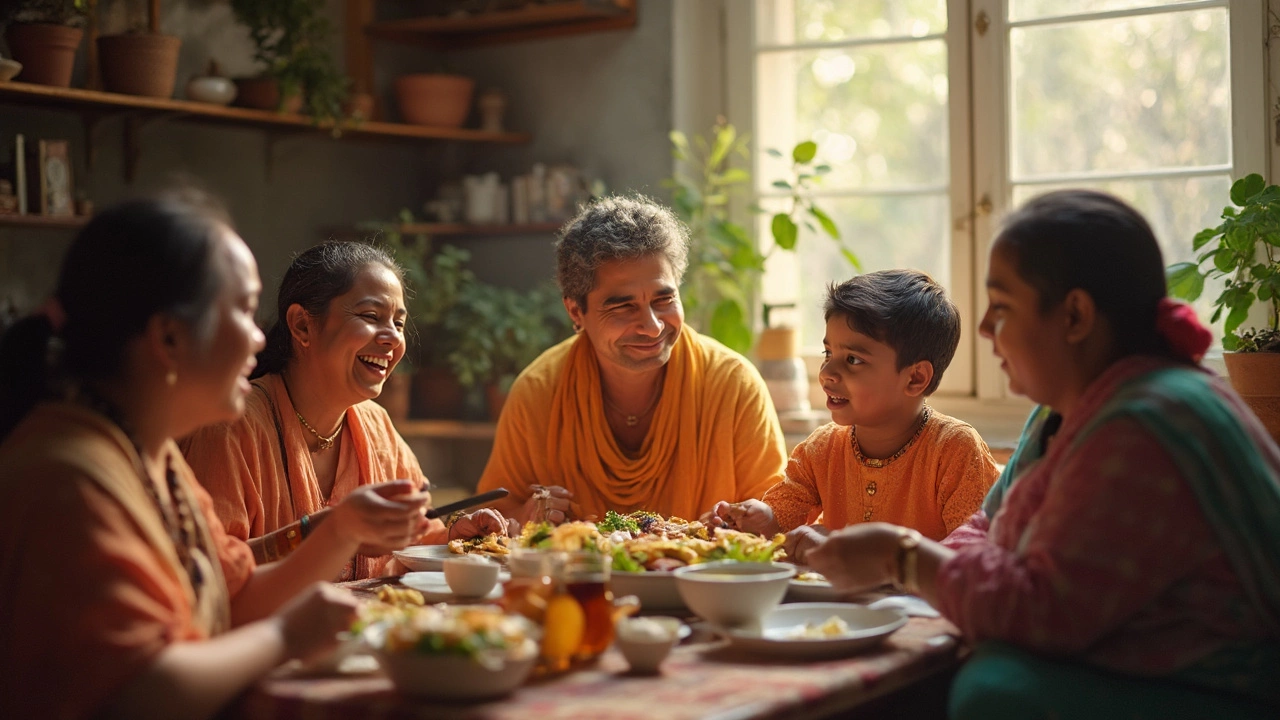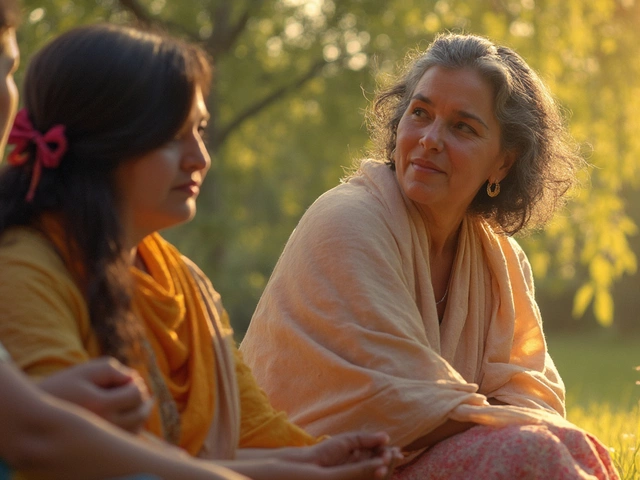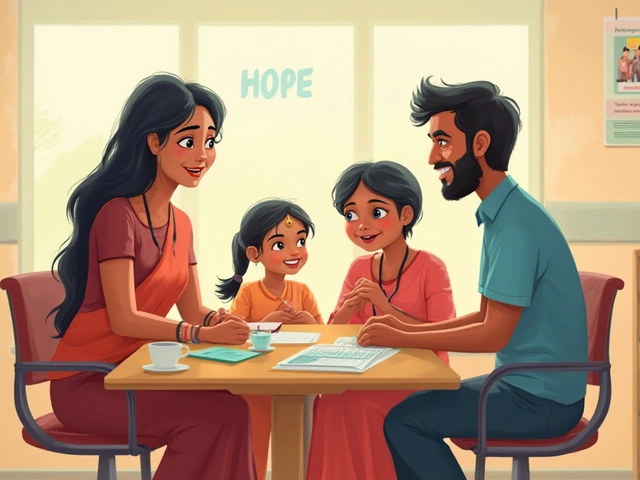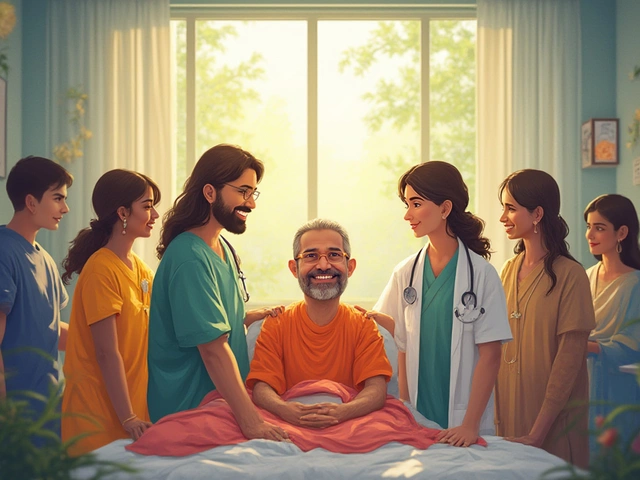Cancer is probably the one word nobody wants to hear from their doctor. But right after the shock comes a flood of questions, and at the top of the list is: how long can someone live with this?
Here’s a fact that might surprise you: more people are living longer with cancer now than ever before. Thanks to earlier detection and better treatments, what used to be an automatic death sentence isn’t always one anymore. But it’s not as simple as plugging your diagnosis into a calculator. Life expectancy depends on a mash-up of things like the type of cancer, where it is, when it was found, treatments, your own health, and even a bit of luck.
If you or someone you love is facing this, don’t just hang onto a random number you found online. Those statistics are averages—they don’t tell you your own story. The truth is, there’s loads you can do to shape what happens next, and the first step is understanding what really impacts how long someone can live after a cancer diagnosis.
- What Decides How Long Someone Lives With Cancer?
- Types and Stages: The Survival Difference
- The Role of Modern Treatments
- Everyday Choices That Influence Survival
- Stories: Real People, Real Numbers
- Finding Support and Reliable Info
What Decides How Long Someone Lives With Cancer?
This is where things get real. Everyone wants a straight answer, but how long someone can live with cancer depends on quite a few things stacking up. It’s not just about the type of cancer—it’s about when it’s found, how much it’s spread, how your body responds, and what treatment options are open for you.
- Cancer survival rates vary a lot by the type and stage of cancer.
- Your age and overall health shape what treatment you can handle and how well it might work.
- How well your body fights the disease or handles side effects can be just as important as any medication.
- Some cancers, like testicular cancer, often have high survival rates, while others, like pancreatic cancer, are much tougher to handle even with early treatment.
Here’s a quick look at five-year survival rates for common cancers (US data, 2024):
| Cancer Type | Five-Year Survival Rate |
|---|---|
| Breast (localized) | 99% |
| Prostate | 97% |
| Lung (all stages) | 25% |
| Colorectal | 65% |
| Pancreatic | 12% |
But remember, these are averages. An early-stage lung cancer can be easier to tackle than a late-stage melanoma, and sometimes someone’s attitude, support system, and willingness to try new treatments can give them an extra edge.
There’s more: lifestyle counts, too. Did you know people who stay active and eat a balanced diet during treatment often report better quality of life, and sometimes even outlive the statistics? Regular checkups, knowing your history, and pushing for screenings matter more than most folks think.
Types and Stages: The Survival Difference
Not all cancers are built the same. Some, like certain skin cancers, can be dealt with pretty easily if caught early. Others, like pancreatic cancer, are tougher right from the get-go, mostly because they’re sneaky and don’t show symptoms until later. The cancer survival rate you see thrown around usually depends on what kind of cancer someone has and how far it’s spread by the time doctors find it.
For every type of cancer, doctors use a staging system to figure out exactly where the cancer is and if it’s moved to other parts of the body. Here’s the gist:
- Stage 1: The cancer is small and hasn’t spread. The odds of beating it are usually the best at this point.
- Stage 2 and 3: The cancer is bigger, maybe in nearby lymph nodes, but still hasn’t spread all over. Treatment is usually more involved.
- Stage 4: This is what you’ll hear called “advanced” or “metastatic” cancer, meaning it’s moved to other parts of the body. This stage is harder to treat but some people live for years with stage 4 cancer thanks to new therapies.
A breast cancer found at stage 1 can have a 5-year survival rate of 99%. That same diagnosis, if found at stage 4, drops to about 30%. That’s a huge swing, and you’ll see the same kind of gap with other cancers. Here’s a quick snapshot to give you an idea:
| Cancer Type | Stage 1 (5-Year Survival Rate) | Stage 4 (5-Year Survival Rate) |
|---|---|---|
| Breast | 99% | 30% |
| Prostate | 99% | 33% |
| Colon | 91% | 15% |
| Lung | 65% | 9% |
The numbers above are U.S. averages from the last few years, but things change—treatments get better, and sometimes folks beat the odds. A younger person with no other health problems usually does better than an older person with other medical issues. Remember, these are averages, not predictions for one person. It really matters to know exactly what type of cancer you’re dealing with and what stage it’s at. That info helps you and your doctors make a real plan.
The Role of Modern Treatments
Let’s talk about what’s really keeping people alive longer: new cancer treatments. The old days, where options were mostly limited to surgery and chemo, are gone. Today, doctors have a much bigger toolbox. Some of these tools really are game-changers for survival and everyday living.
Immunotherapy is a big name now. It teaches your immune system to spot and attack cancer cells. For some people with lung cancer and melanoma, this approach has stretched life expectancy from months to years. There’s also targeted therapy. Instead of blasting the whole body, it finds the exact mutation causing the trouble. A good example is drugs like imatinib for certain leukemias—patients who used to face a grim prognosis now have real hope for long-term survival.
Check out how different treatments stack up for some common cancers:
| Cancer Type | 5-Year Survival Before 2000 | 5-Year Survival Now (2020s) | Main Modern Treatments |
|---|---|---|---|
| Breast | 77% | 91% | Targeted Therapy, Hormone Therapy |
| Melanoma | 83% | 93% | Immunotherapy |
| Lung | 13% | 26% | Targeted Therapy, Immunotherapy |
| Leukemia (CML) | 31% | 70%+ | Targeted Therapy |
Advanced radiation therapy is also much more precise now. Less healthy tissue gets damaged, which means fewer side effects and better results. And for some cancers, a mix of surgery, radiation, and drugs gives people a fighting chance. It often comes down to picking the right approach for a specific cancer and person.
One key tip: if you or a loved one is facing cancer, ask if there are clinical trials or the latest approved treatments nearby. Especially for cancers that are tough to treat, these new therapies could boost cancer survival odds.
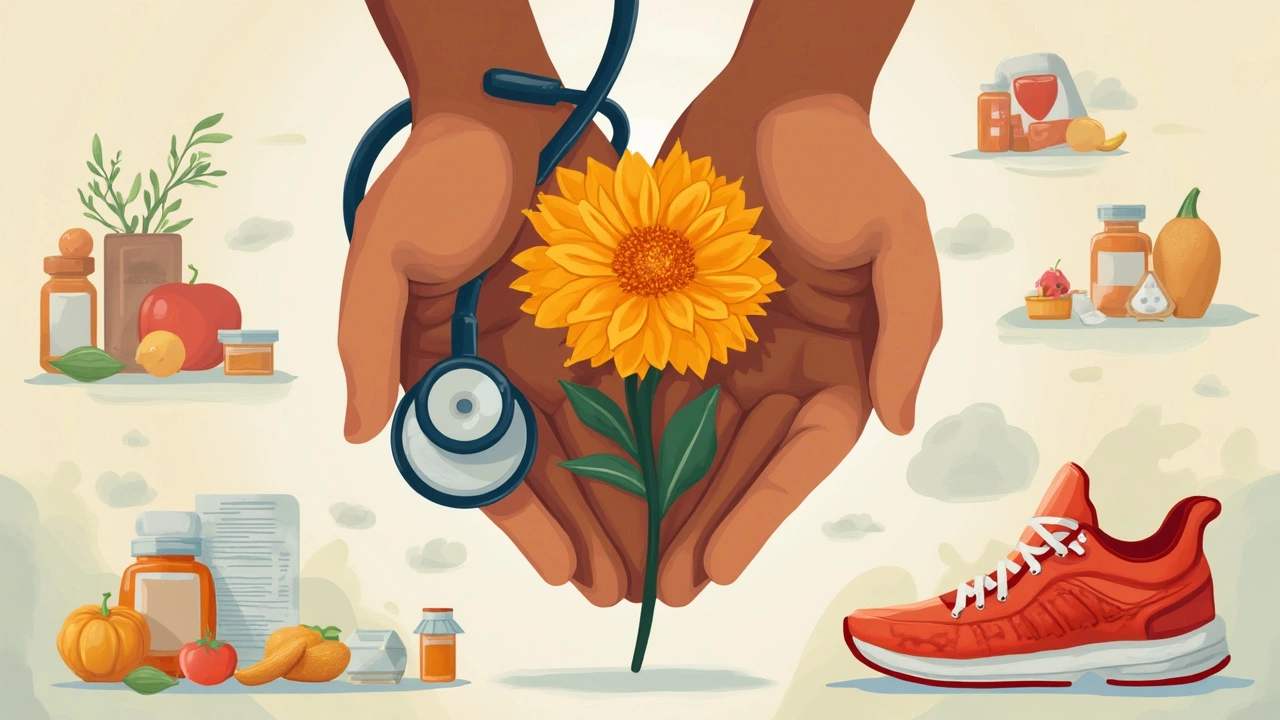
Everyday Choices That Influence Survival
A cancer diagnosis shakes up your whole routine, but what you do day-to-day still matters—a lot. It’s not about searching for miracle cures or going on complicated diets, but about stacking small, proven choices to support your body while it’s battling back.
Let’s talk about food first. Eating well can help your body handle treatments and maybe even boost how well you bounce back. People who eat plenty of fruits, veggies, whole grains, and lean protein often have more energy and less trouble with the side effects. Hydration is underrated—being well-hydrated can make a real difference, especially during chemo or radiation sessions when your system is under stress.
Then there’s movement. Even short, gentle walks can help reduce cancer-related fatigue, keep muscles working, and lift your mood. You don’t need to run marathons. Honestly, studies have shown that just being less sedentary—moving around a few times a day—makes a positive impact compared to staying in bed or on the couch all day.
Your mental health counts, too. Folks who get help for depression or anxiety, or just talk to a counselor, tend to handle treatments better. Support groups can be a lifeline. Remember, there’s nothing weak about asking for help—sometimes just having someone to listen makes it easier to manage the tough days.
Don’t forget to keep up regular medical check-ins, either. Following your doctor’s advice about meds, scheduling follow-up tests, and reporting side effects early can help spot problems before they get big.
Here’s a table that sums up some everyday actions and what studies have found about their benefits:
| Everyday Choice | Proven Impact |
|---|---|
| Eating more whole foods | Improved energy and immune support |
| Staying active (even with basic movement) | Reduces fatigue and boosts mood |
| Mental health support | Better treatment coping and higher quality of life |
| Following treatment plans closely | Improved cancer survival rates |
| Staying hydrated | Helps manage side effects and recover faster |
The bottom line? Small changes add up. You don’t have to be perfect—just doing your best with what you can control is already a win.
Stories: Real People, Real Numbers
You don’t have to look far to find real examples of people outliving the expectations for their cancer diagnosis. The numbers tell us part of the story, but hearing what happens in actual lives makes it stick.
Take breast cancer. According to recent statistics, about 90% of women diagnosed at the earliest stage (stage 1) in the US are still alive five years later. Janet, a teacher from Delhi, was 39 when doctors found her lump. Treatment was tough, but nine years later she’s hiking in the Himalayas with her family. That five-year survival stat isn’t just data—it's playing out in lives right now.
Lung cancer usually sounds scarier, but the exact numbers again depend on when it’s caught. About 60% of people with early-stage lung cancer survive at least five years. But here’s the catch: most cases are found too late. Ramesh, a retired banker, got diagnosed early by accident after a minor car crash led to a scan. He got treatment fast, and three years later, he’s still cheering at his granddaughter’s cricket matches.
There are cancers with trickier odds, like pancreatic cancer, where the five-year survival rate is about 11%. Still, some beat those odds. Anand, who took part in a clinical trial, is now celebrating his fourth year post-diagnosis. Clinical trials and new drugs give hope where statistics look brutal.
So, what do these numbers actually mean? Nationwide survival rates give a rough map, but plenty of people take a different route. Personal health, fast action, and sticking with treatment plans can flip the story. And treatment options are improving year after year, thanks to research and better tech.
The main takeaway? Cancer survival rates are more flexible than you think. Don’t get trapped by a single number. Find stories that look like yours. Talk to your doctor about what’s truly possible with your particular situation. Real lives make the statistics come alive—and remind us they don’t write the whole script.
Finding Support and Reliable Info
The internet is full of cancer stories, miracle cures, and scary stats, but how do you know which ones are actually useful? When you or someone you care about is looking for answers, going straight to trusted sources is a must. Not all info is created equal—there’s a big difference between personal blogs and real medical advice.
The American Cancer Society and Cancer Research UK are solid places to start. Their websites break down the latest treatments, survival rates, and helpful tips for everyday life. Your doctor and hospital team should also have printouts or links to honest, up-to-date information.
Getting good cancer survival stats doesn’t just ease your mind; it helps you make better choices, too. As one oncologist from Mayo Clinic puts it:
"Accurate, reliable information can help patients feel more confident, less anxious, and more in control of their cancer journey."
Support isn’t just about facts, though. Connecting with others who get it can take a huge weight off your shoulders. From local cancer support groups to online forums like Cancer Survivors Network, you’ll find people happy to swap stories or just listen. Even social media has decent private groups where you can vent, laugh, and ask real-life questions.
Here’s what helps most people stay grounded:
- Ask your care team for leaflets or links to trustworthy websites.
- Lean on organizations like the National Cancer Institute and Macmillan Cancer Support for answers.
- Join a support group—online or in person. It’s not all sadness; some groups run art classes, fitness meetups, and cooking sessions.
- Watch out for “miracle cure” stories. If it sounds too good to be true, it probably is.
And don’t be shy about asking the same question twice. You deserve clear, honest info, whether it’s about life expectancy, side effects, or just finding someone to talk to after a rough Tuesday appointment.
